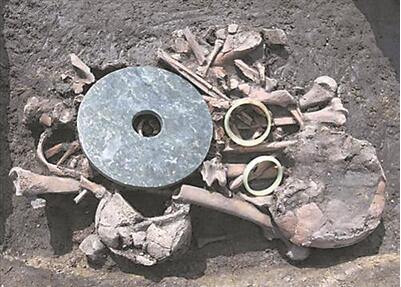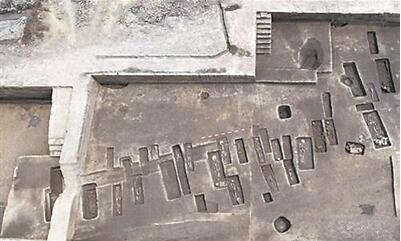

Liangzhu Town is located in Yuhang of Zhejiang, yet the presence of Liangzhu Culture can be seen in the entire Qiantang River Basin and Taihu Lake Basin. Its ruins can have been found in regions such as north of Jiangsu, Anhui and Jiangxi.
In an exhibition hall of Nanjing Municipal Museum, you can see yu bi, yu cong, jade yue (jade battle-axe) and jade bracelet etc. from different archaeological ruins of Liangzhu in Jiangsu Province...The jade wares created by the skilful craftspeople of Liangzhu represent the highest level of jade ware craftsmanship of the Neolithic Age, covering such aspects of Liangzhu Ancient State as religion, politics, military and ritual system five thousand years ago.
A lot of Liangzhu cultural heritages are collected in several museums of Jiangsu, represented by human-bird-beast jade ornaments with a hollow-out carving and jade cong with animal-headed patterns, many of which are valued as “national treasure”. Plenty of Liangzhu Culture historical sites are distributed across Jiangsu. Elements of Liangzhu Culture have been found in Huating Ruins discovered in Xinyi of Xuzhou City, more than 500 km away from Liangzhu Town. It broke the stereotype that “Liangzhu Culture cannot be found in the north of the Yangtze River”.
As early as 1920s, lots of jade wares were unearthed from Caoxie Mountain site at the bank of Yangcheng Lake. In 1937, Nanjing Museum conducted an archaeological excavation at the Caoxie Mountain Historical Site. The M198 tomb of Liangzhu discovered at the site was a surprise to scholars, which is the most important Liangzhu Culture relic discovered at the site. All kinds of jade wares, jade weapons, sacrificial vessels and ornaments have been found in the tomb. According to experts, the owner of the tomb should be a noble male of Liangzhu Ancient State.
Every ruins reveal a different aspect of the life of Liangzhu people. From 1990 to 1995, archaeologists uncovered a large earthen terrace built artificially with a thickness of roughly 4 meters and an area of nearly 3,000 ㎡ at the Zhaoling Mountain Site. The tombs discovered on the terrace and at its sides are higher in standard with abundant and diversified burial objects and funeral utensils in most cases. At the periphery south and northwest of the earthen terrace, a large group of “tombs of people buried alive” without any pit and funeral utensils have been unearthed. It’s inferred that a group of young men were killed at this place. Professor Su Bingqi, a well-known archaeologist, called the large earthen terrace at the Zhaoling Mountain Site as “Earthen Pyramid”.
After Liangzhu Archaeological Site was inscribed onto the World Heritage List, the protection of the historical sites, heritages and relics of Liangzhu Culture, as well as the Liangzhu Spirit, deserves further attention.
(Executive Editor: Yongliu He)